HALEY BRITTINGHAM ⍚ PORTFOLIO
What is "American"?
This lesson will help students understand that America does not have a single identity but an ever-changing one with guiding principles of opportunity, happiness, and freedom.
Lesson
To continue the discussion of self-reflection, appreciating diversity and increasing pride in individual cultural identity, we discussed the topic of immigration and took the time to make connections that "we were once them." During this lesson, students studied various types of maps to show different factors of identity such as ancestry and religious beliefs. Then, students watched a short clip of President Obama discussing immigration and how all Americans, unless Native American, came from immigrants who traveled here in hopes of a better life. With this, we discussed what it means to be "American" then students delved into researching Ellis Island and Angel Island. Using their KWL chart as shown below, students collected interesting facts from the websites I provided to share with their classmates. This worksheet helped them gather and organize their thoughts in order to properly record and then speak about the issues that immigrants face. After discussing their takeaways, we revisited the question of "What is American?".
Students began making connections to why people wanted to come here then, and now, the hardships people faced and are facing to becoming a citizen, and the resistance that Americans put up then and now to changing demographics. As students continued their research they shared their opinions on the injustices that immigrants face as human beings. One response was, "we treat them [immigrants] like animals, by capturing them and keeping them in detention centers which is like a pound."
Students were surprised that they had never heard of Angel Island and believed that many people probably have not made the connections to the past and how immigrants are treated today. Throughout our lesson, students were citing the resources as they shared with one another new facts and connections they were making. This lesson helped them think about immigration, a real-world issue, in a more empathetic way.

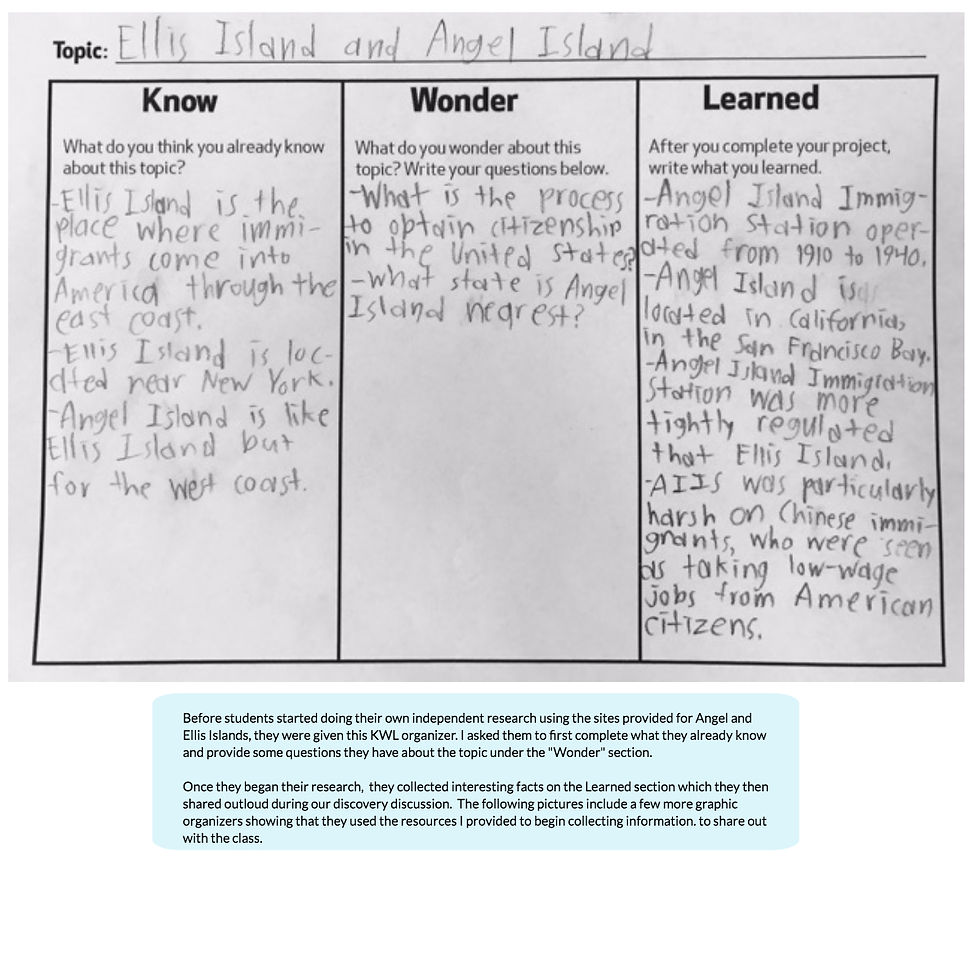
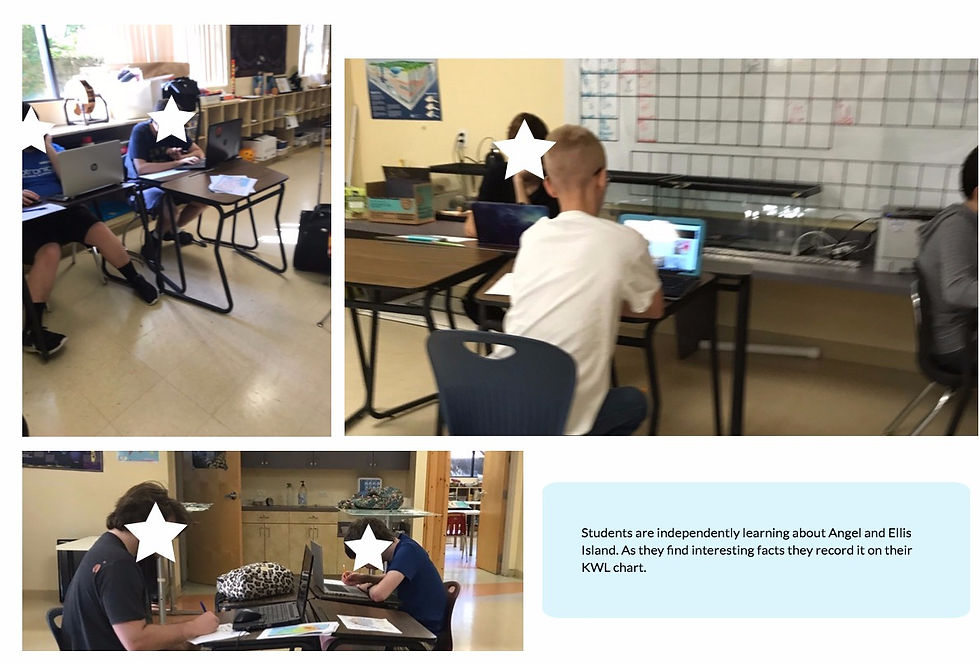
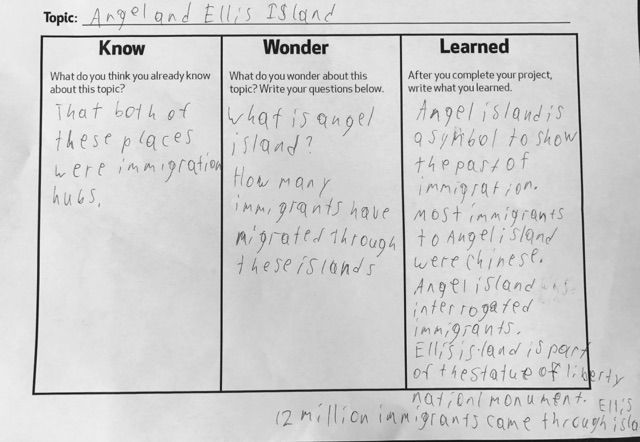
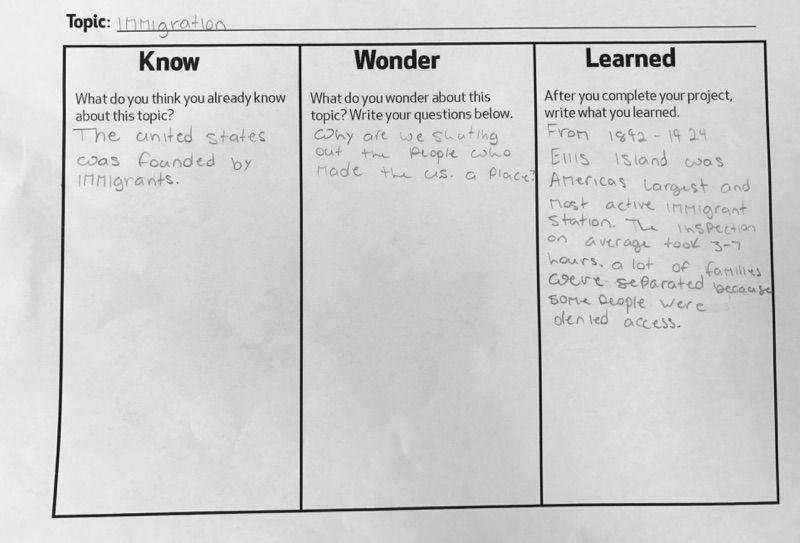
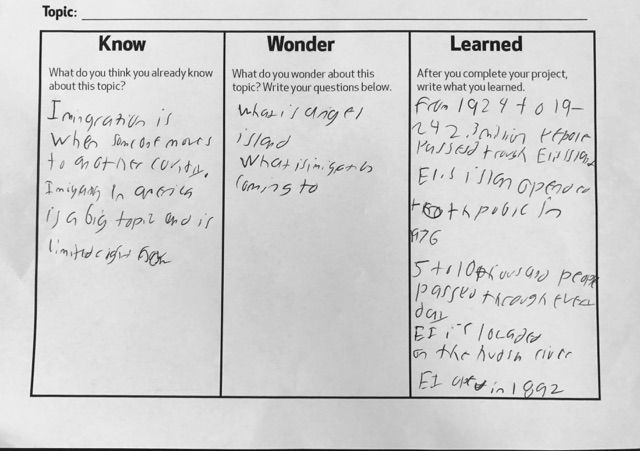
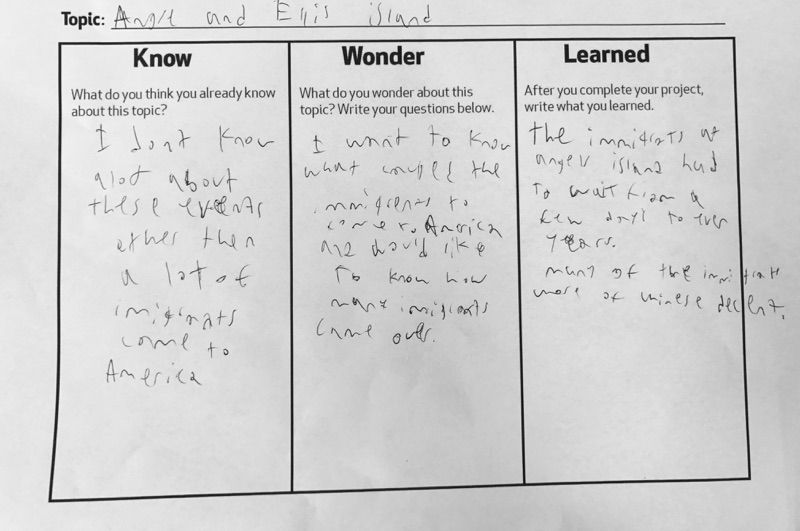
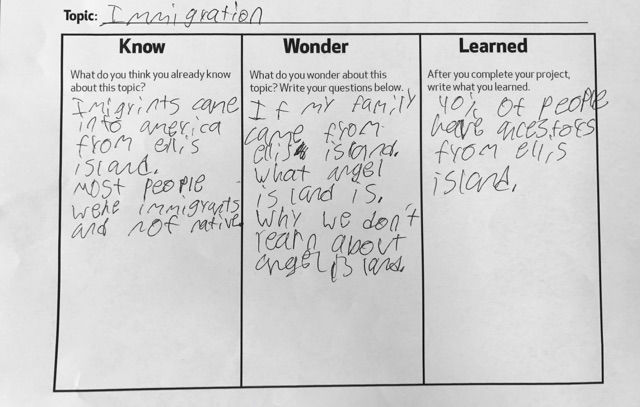
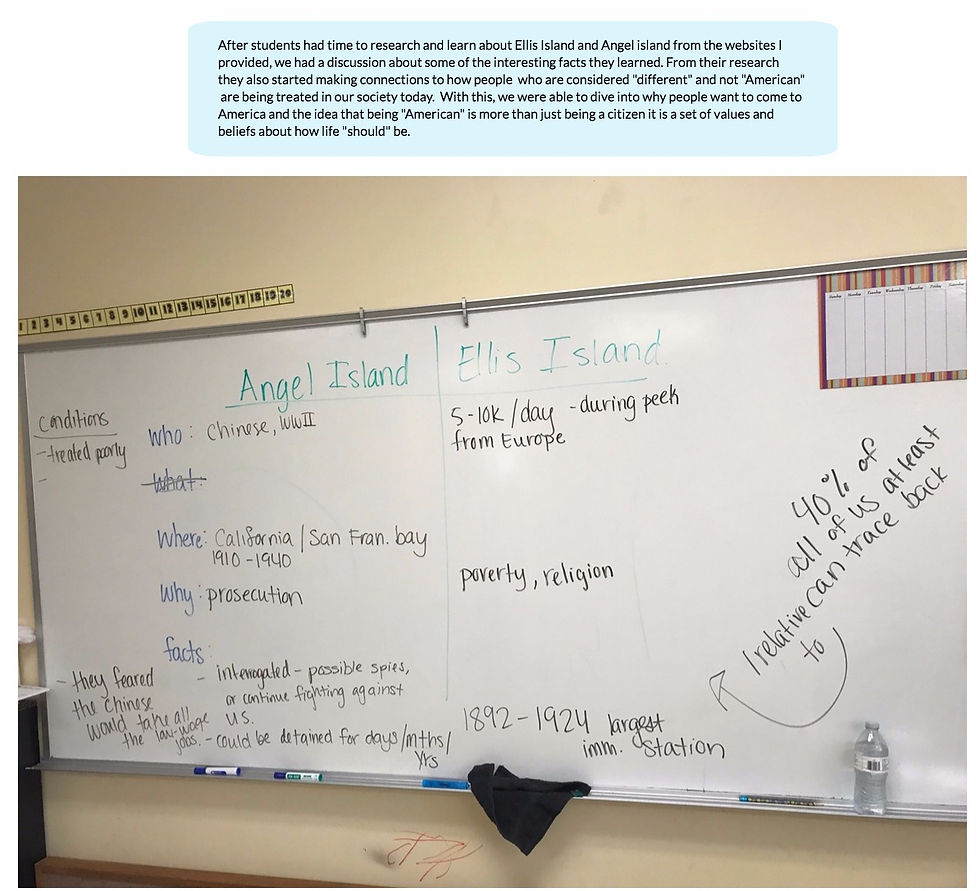
Advocacy Project
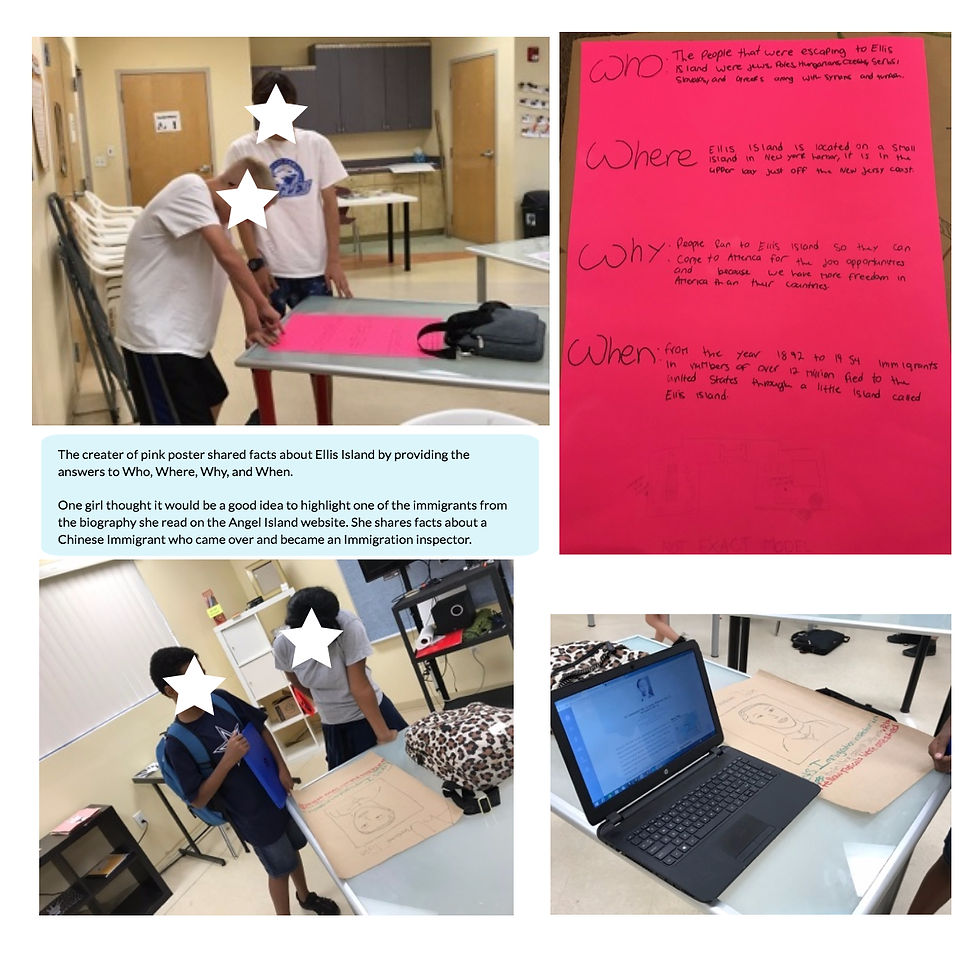

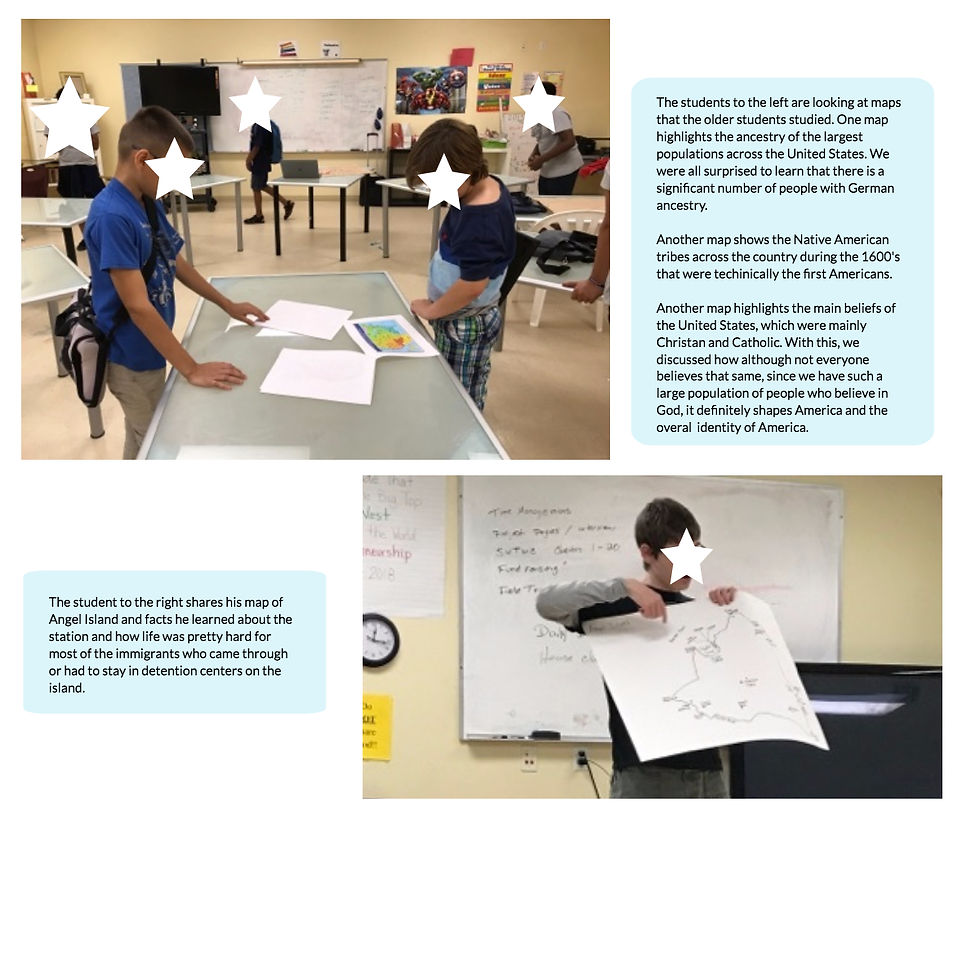
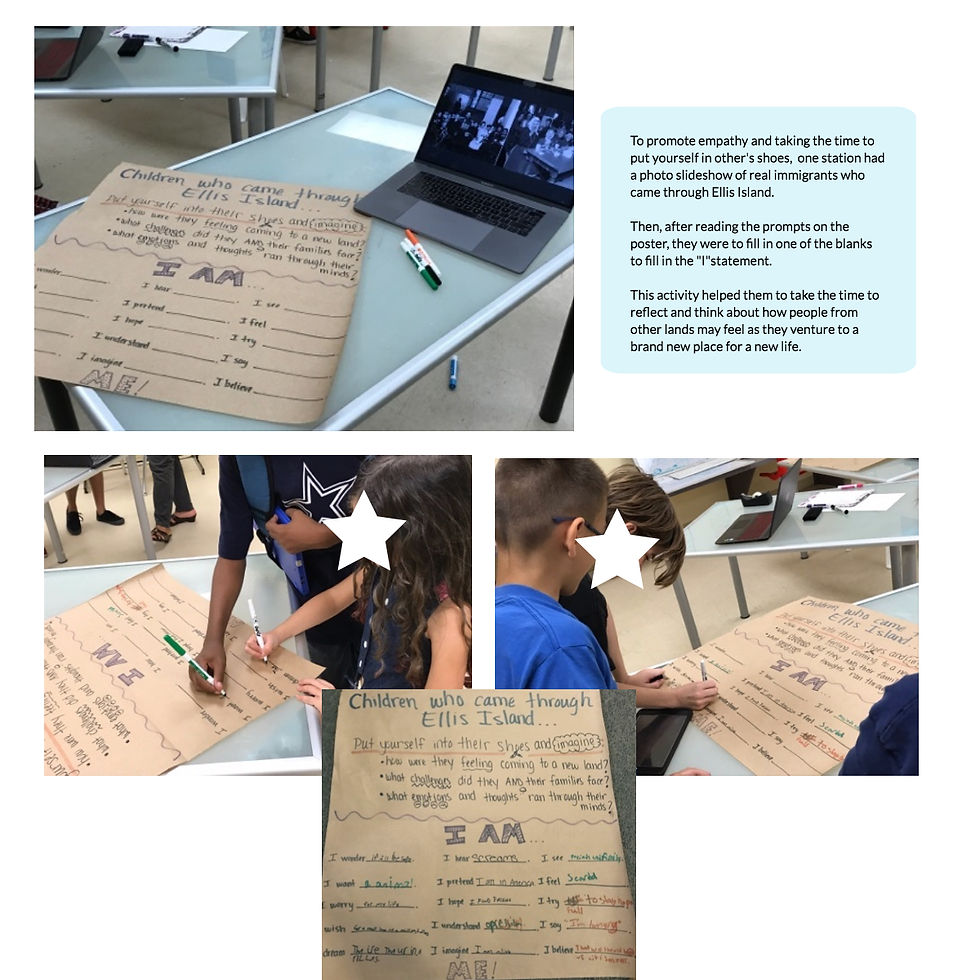
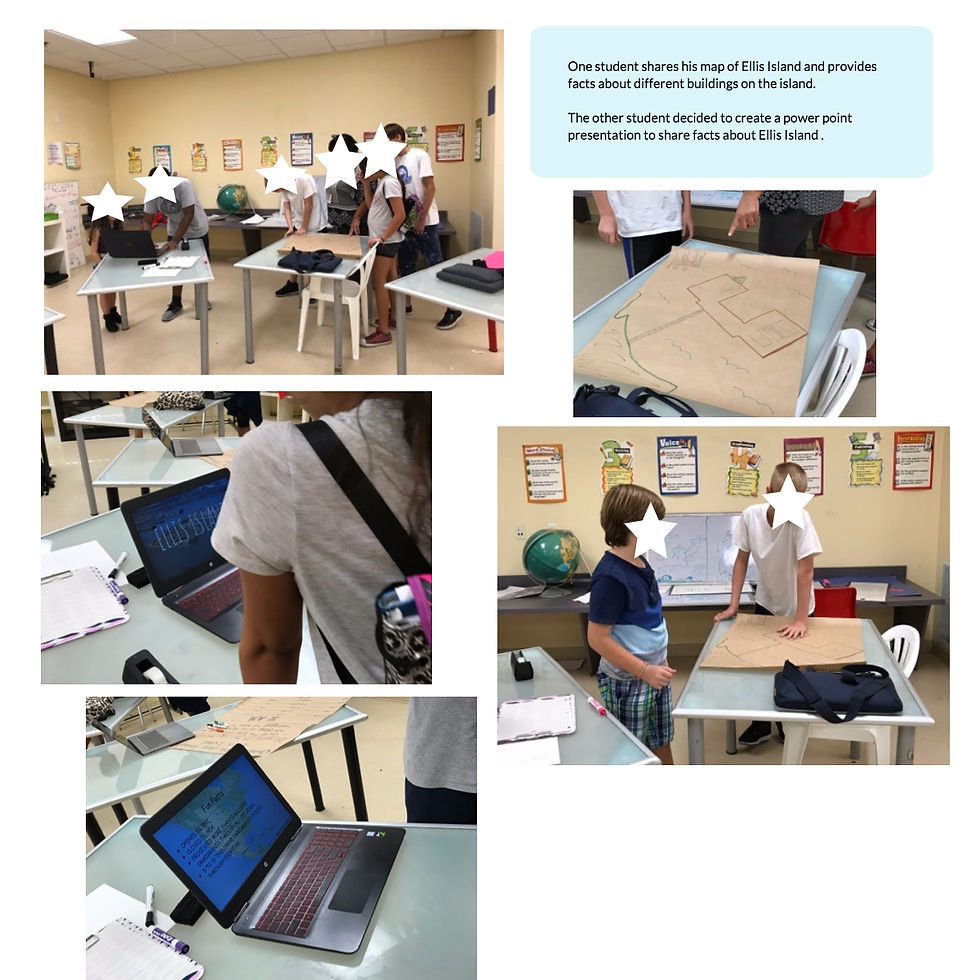
Students concluded that most people do not take the time to learn from history as it is apparent that history repeats itself. From there, students:
-
Thought about how they could share this information with other students at Ampersand and also their parents because they felt it was important to teach others how to encourage them to be more understanding and try to change the way people are treated
-
Created individual presentations and then agreed to present them to the younger students. Some displays were factual posters, some were maps of Angel or Ellis Island, and others created PowerPoint Presentations.
-
Showed pictures of actual immigrants and had an "I Am" station within their circle of presentations to help their audience understand and empathize with the immigrants.
Students worked individually to prepare their presentations using the websites provided regarding Angel and Ellis Island. They worked collectively to set up the room for their walk-through presentation space. During the presentation, students were sharing the information they learned from research and provided their opinions about how events that happened many years ago at these immigration stations is very similar to what is happening today. They also shared how "we were once them" and how we should treat others, despite their background, with kindness rather than hatred and fear. This presentation was their first, and during their December Exhibition night, students will share their findings and conclusions with their parents and family members who attend.
Student Reflections
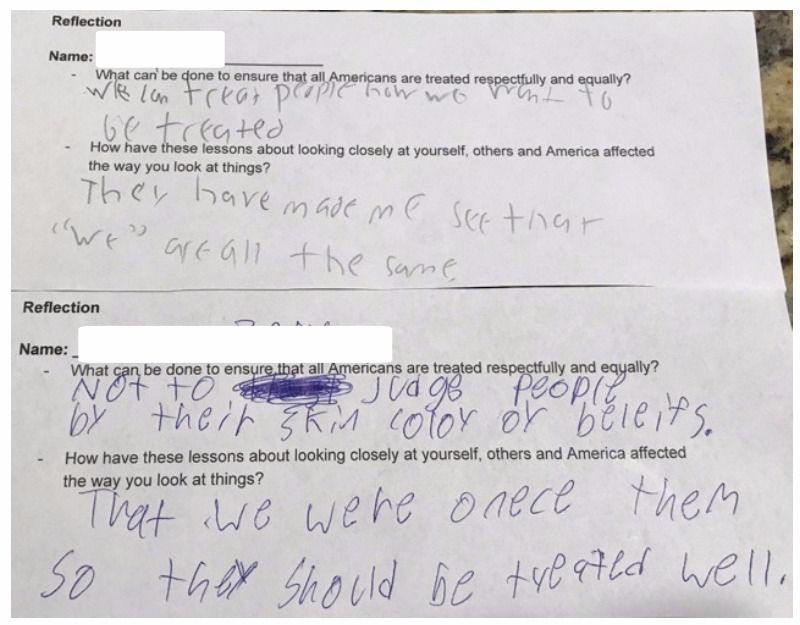
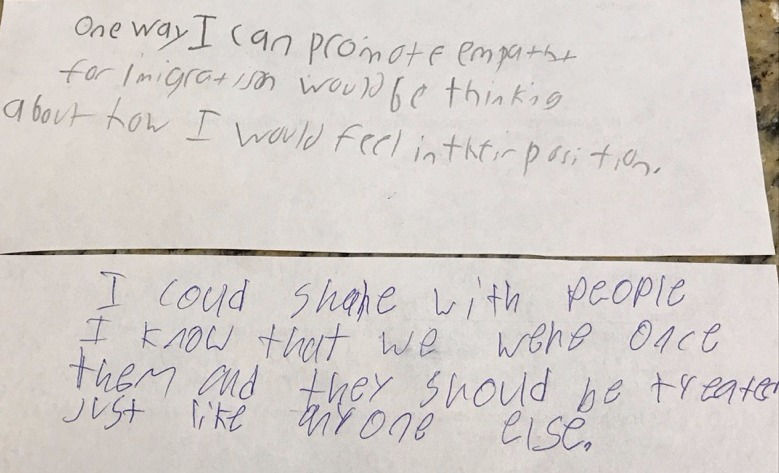

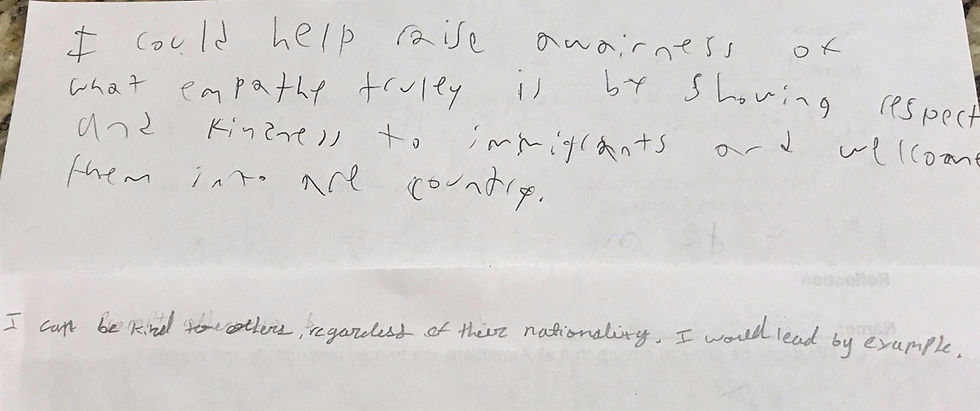


After students created their presentations and presented their findings to the younger students, they reflected on our lesson series that all ties back to increasing pride in cultural identity. The real world problem in this lesson is that the American identity is a make-up of many different cultural identities which is what has led to such innovations and advancements, yet there is a lot of resistance, hatred and even oppression towards those who seem not to belong.
Many of these students even agreed with the oppression that immigrants face before they started researching, discussing, and realizing what being American is. With that, students provided their answers to two questions, and on the back side, I asked them to reflect and answer, "identify a next step on how you can promote more empathy and understanding about immigration." Their answers are in the right column which includes bringing awareness, listening to people and learning about other cultures.
Reflection
This lesson What is "American?" was important to teach especially during the current societal issues surrounding race and immigration. Students learned and also taught others that we all share a unique American identity, including those who wish and struggle to be a part of our country. This identity includes the wanting of increased opportunities, freedom of religion, and the pursuit of happiness. Students also learned how being American is really about being diverse and using diversity to advance and create opportunities. The lesson went extremely well because students were using the resources provided and were making connections from the similarities in history to present-day America. They were not pushing the opinions of specific immigration policies, as that was not the point of this lesson, students were educating themselves and others about taking the time to listen, reflect, and understand that most of us are here because of our ancestors who immigrated in hopes of a better life. With this, they were able to tie it back to their own cultural identity and take pride in the fact that they do belong and are an important aspect of what makes up America.